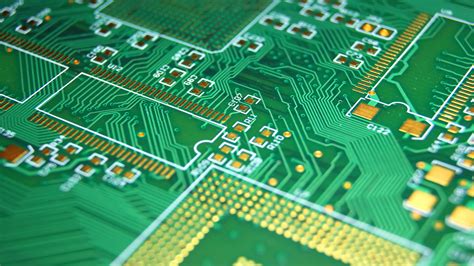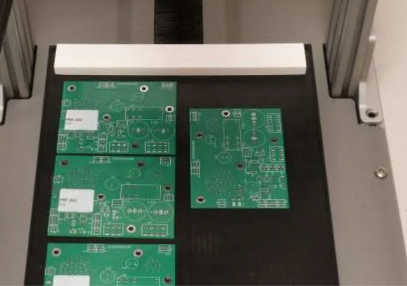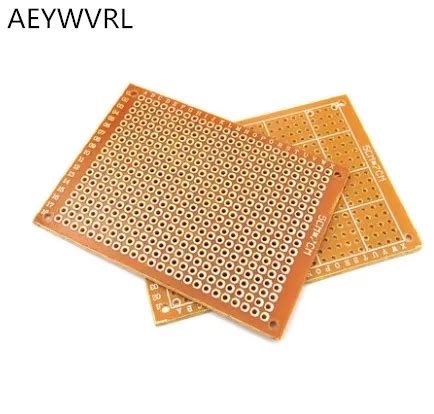Unveiling the Importance of Bare Printed Circuit Boards
Key Takeaways
In understanding the critical role of bare printed circuit boards (PCBs), it becomes evident that they serve as the backbone of your modern electronic devices. When you consider pcb manufacturing, you are looking at a process that entails meticulous attention to detail and precision engineering. The pcb manufacturing companies globally engage in advanced techniques to produce high-quality bare PCBs that can significantly affect performance and reliability. As you explore the landscape of pcb manufacturing cost, it’s important to recognize how these expenses can fluctuate based on materials, designs, and the complexity of the circuitry required. Engaging in a pcb manufacturing business requires keen insights into these factors to ensure you deliver not just any product, but one that meets exacting standards and demands. Whether for industrial applications or consumer electronics, the quality of bare PCBs directly influences the efficiency and longevity of electronic systems, making them an essential component worth your attention. Understanding these dynamics will equip you with the knowledge necessary to navigate this crucial sector effectively.
Unveiling the Foundation: Understanding Bare Printed Circuit Boards
Bare printed circuit boards (PCBs) serve as the backbone of virtually all electronic devices, highlighting their significant importance in modern technology. As you delve into the world of PCB manufacturing, you will discover that these essential components are crafted with precision to ensure optimal performance. Each bare PCB is a complex arrangement of conductive pathways, substrates, and insulating materials, resulting in an intricate design that supports various electrical components. Understanding this structure is vital for recognizing how different pcb manufacturing companies operate and innovate within the industry.
When considering your own ventures in pcb manufacturing, it is crucial to assess factors such as the pcb manufacturing cost and the potential for scaling your pcb manufacturing business. The quality and reliability of your products directly correlate with how well you grasp the foundational elements of PCBs. You might find it beneficial to explore effective production techniques and materials that can enhance durability and functionality.
“Quality starts at the design phase; ensure your bare PCBs meet industry standards for maximum efficiency.”
This insight emphasizes the necessity for meticulous planning during early stages of PCB development. By embracing a comprehensive understanding of bare printed circuit boards, you equip yourself with knowledge that not only enhances your projects but also strengthens your position in a competitive market. Therefore, investing time in understanding these fundamental components will ultimately pay dividends when striving for excellence in electronics design and production. For further guidance on PCB solutions, consider exploring resources from reputable providers like Andwin.
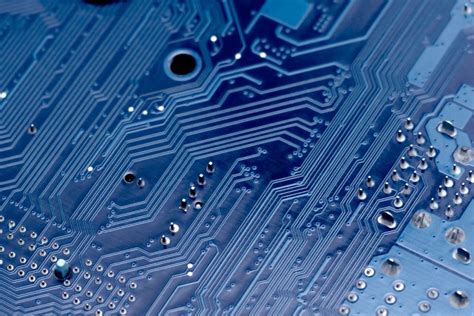
The Anatomy of Bare PCBs: Structure and Composition
Understanding the structure and composition of bare printed circuit boards (PCBs) is fundamental to recognizing their pivotal role in the world of electronics. A bare PCB primarily consists of a non-conductive substrate, typically made from materials like fiber glass or epoxy resin, upon which conductive pathways are etched or printed. The main goal here is to create a platform for electrical components to connect and communicate effectively.
The basic layers of a bare PCB include the substrate, where the board’s body resides, and the copper layer, which forms the conductive pathways. The thickness of these copper layers can significantly influence the PCB manufacturing cost and performance metrics. For instance, a thicker copper layer can handle higher currents but may raise costs. Comprehensive understanding of these aspects aids your decision-making process if you’re considering partnerships with various PCB manufacturing companies.
| Component | Description |
|---|---|
| Substrate | Non-conductive material that provides structure |
| Copper Layer | Conductive pathways, usually 1oz or 2oz thick |
| Solder Mask | Protects wiring from environmental factors |
| Silkscreen Layer | Marks for component placement |
Each component plays an essential role in ensuring that your final product is robust and functional. Moreover, when it comes to your PCB manufacturing business, understanding these elements is crucial for improving both performance and reliability while keeping costs manageable. Therefore, grasping the anatomy of bare PCBs equips you with knowledge that not only enhances your understanding but also aids in tackling challenges that may arise during production.
Manufacturing Mastery: How Bare PCBs are Made
The journey of creating bare printed circuit boards (PCBs) begins with the selection of high-quality materials, an essential factor in pcb manufacturing. Typically, a substrate material such as FR-4 is used for its excellent electrical insulation and mechanical properties. In the initial phase, pcb manufacturing companies utilize advanced software for designing the circuit layout, ensuring precise routing of copper traces on the board. Once the design is finalized, it moves on to photolithography, where a light-sensitive film is applied to the board. This process creates a mask that defines where copper will remain after etching. Following this, the actual pcb manufacturing process involves depositing layers of copper and removing unwanted material through etching.
Next comes drilling—precise holes are created for vias and component leads based on the specifications laid out earlier. This step is crucial in establishing connections between different layers of the bare PCB. As you witness this intricate process unfold, you’ll appreciate how each component contributes to the overall functionality and reliability of electronic devices. Finally, you should acknowledge that while cost efficiency in pcb manufacturing cost is vital for businesses, it never compromises quality. Manufacturers continuously innovate their processes to improve yield rates and reduce costs while ensuring that every bare PCB meets exacting standards before reaching your hands or those of your consumers.

Testing Techniques: Ensuring Quality in Bare Printed Circuit Boards
When it comes to bare printed circuit boards (PCBs), ensuring quality through rigorous testing techniques is paramount. With the increasing demand for advanced electronics, you must understand that the reliability of your electronic devices hinges on the quality of their underlying components, namely the bare PCBs. Various testing methods are employed by PCB manufacturing companies to assess several critical aspects of these boards, including continuity, insulation resistance, and overall integrity. Techniques such as Automated Optical Inspection (AOI) and Flying Probe Testing are becoming industry standards to detect potential defects early in the PCB manufacturing process. Not only do these methods help reduce PCB manufacturing costs, but they also significantly enhance the performance and reliability of the final products. It’s crucial for you to recognize that a robust testing regime not only mitigates risks associated with failures in the field but also serves as a testament to the quality assurance practices employed by your chosen PCB manufacturing business. Through continuous innovation and adherence to strict testing protocols, manufacturers can guarantee that each bare PCB meets or exceeds industry standards, ultimately contributing to a higher degree of consumer confidence in modern electronic technologies.
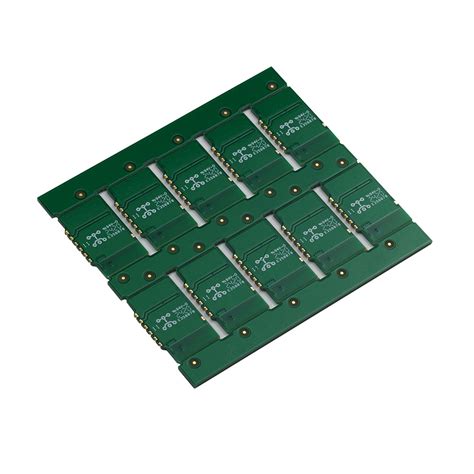
The Role of Bare PCBs in Modern Electronics
Bare Printed Circuit Boards (PCBs) play a crucial role in the functionality and efficiency of modern electronic devices. Essentially, these PCBs serve as the backbone of electronic circuits, providing a structured platform for the mounting of various components. With advancements in technology, the pcb manufacturing process has become increasingly sophisticated, allowing for more intricate designs that cater to an array of applications.
When evaluating pcb manufacturing companies, one must consider factors such as the quality of materials used and their ability to achieve precise specifications. High-quality bare PCBs not only enhance performance but also reduce the overall pcb manufacturing cost by minimizing errors and ensuring longevity in various electronic applications. This is vital for businesses looking to remain competitive in a rapidly evolving market.
Your understanding of the pcb manufacturing business landscape can empower you to make informed decisions when selecting a manufacturer or supplier. By recognizing the importance of bare PCBs, you position yourself advantageously within an industry that demands excellence and innovation. This foundational understanding will enable you to appreciate how these components contribute significantly to device performance and reliability in our interconnected world.
Innovations in PCB Design: Elevating Performance and Reliability
In the fast-evolving arena of electronics, innovations in PCB design hold significant value, as they directly impact the performance and reliability of devices. As you delve into the world of bare printed circuit boards (PCBs), you will find that advanced design techniques can lead to greater functionality while minimizing PCB manufacturing costs. One key aspect of modern PCB design is the integration of high-density interconnect (HDI) technologies, which allows for more components to fit into smaller spaces. This is essential for meeting the demands of compact electronic devices that require enhanced performance without sacrificing reliability.
Moreover, as you explore various PCB manufacturing companies, you’ll notice a trend towards implementing more sophisticated simulation tools during the design phase. These tools help identify potential issues early on, reducing the likelihood of errors during production stages. As a result, this proactive approach not only streamlines the manufacturing process but also mitigates risks associated with performance failures.
When considering your PCB manufacturing business, recognizing these innovations is crucial. By adopting state-of-the-art materials and techniques—such as flexible PCBs or multilayer boards—you can stay ahead of market trends and ensure that your products meet consumer expectations for quality and durability. Thus, investing in innovative PCB design not only elevates product performance but also enhances your competitive edge in an increasingly demanding industry landscape.

Challenges in Bare PCB Manufacturing and Solutions
Bare printed circuit boards (PCBs) serve as the backbone of modern electronics, yet their manufacturing is fraught with challenges that can significantly affect the pcb manufacturing cost and overall efficiency. One common issue is the complexity of designs, which may necessitate advanced techniques that not all pcb manufacturing companies are equipped to handle. To combat this, companies increasingly invest in cutting-edge technology and skilled personnel to streamline processes and reduce errors. Another challenge lies in sourcing high-quality materials that meet strict industry standards; using subpar materials not only compromises the integrity of the PCB but also affects the performance of the electronic devices they serve. Engaging with reputable suppliers can mitigate this risk. Furthermore, environmental regulations impact the pcb manufacturing business, requiring manufacturers to adopt sustainable practices while managing costs effectively. By focusing on mastering innovative techniques and prioritizing quality materials, manufacturers can overcome these hurdles, ensuring that bare PCBs continue to advance alongside modern technological developments while maintaining competitiveness in a rapidly evolving market.
Future Trends: The Evolving Landscape of Bare Printed Circuit Boards
As technology advances, bare printed circuit boards (PCBs) are seeing remarkable innovations that transform their role in the electronics landscape. You may have noticed that pcb manufacturing is becoming more sophisticated, incorporating advanced materials and techniques to improve performance and reliability. This evolution is driven by the increasing demand for miniaturized electronic devices without compromising functionality. New manufacturing processes are being adopted by pcb manufacturing companies, emphasizing automation and precision to lower pcb manufacturing costs. These companies are not just focused on cutting expenses but are also investing in research and development to enhance the durability and efficiency of their products.
Emerging trends, such as the integration of flexible PCBs and environmentally friendly fabrication techniques, align with a broader movement toward sustainability in electronics. As a stakeholder in the pcb manufacturing business, you should be aware that these trends offer significant advantages, including lighter weight, reduced space consumption, and improved energy efficiency. Moreover, the ongoing transition toward smart technology demands that bare PCBs adapt to more complex designs while maintaining their fundamental role as a reliable foundation for electronic connectivity. Your understanding of these evolving dynamics will be crucial as you navigate the future landscape of this essential component in modern electronics.
Conclusion
In revisiting the essential role of bare printed circuit boards (PCBs) in modern technology, it’s clear that you have gained insight into their significance within various electronic devices. As you reflect on the critical manufacturing processes, the reliability of pcb manufacturing practices is paramount. Understanding the dynamics of pcb manufacturing companies and how they ensure quality can greatly influence your own decisions in electronics. Furthermore, knowing about the potential variations in pcb manufacturing cost allows you to strategize better in budget planning for your projects or products. As you consider entering the pcb manufacturing business, be aware of not only the operational aspects but also innovative design trends that can elevate your offerings in this competitive landscape. By grasping these elements, you position yourself to make informed choices that drive efficiency and sustainability in your future electronic endeavors.
FAQs
What are bare printed circuit boards (PCBs)?
Bare printed circuit boards (PCBs) are essential components in electronic devices, serving as the foundation for connecting and supporting electronic components. They are made of insulating substrate materials, with conductive pathways etched onto their surface.
Why are bare PCBs important in electronics?
Bare PCBs play a critical role in the functionality of electronic devices. They ensure reliable electrical connections among components, enabling them to function cohesively while significantly impacting overall product performance.
What is the typical pcb manufacturing cost?
The pcb manufacturing cost varies depending on factors such as material, complexity, size, and volume of production. It’s important to gather quotes from multiple pcb manufacturing companies to ensure you receive competitive pricing.
How can I choose the right pcb manufacturing company?
When selecting a pcb manufacturing company, consider points such as their experience, reputation, capability in handling your specific requirements, and customer feedback. Evaluating these aspects will help you find a reliable partner for your pcb manufacturing business.
What challenges do manufacturers face in pcb manufacturing?
Manufacturers often encounter challenges like maintaining quality standards, managing production costs, and adapting to rapid technological advancements. By implementing innovative solutions and refining their processes, many companies are able to address these challenges effectively.

